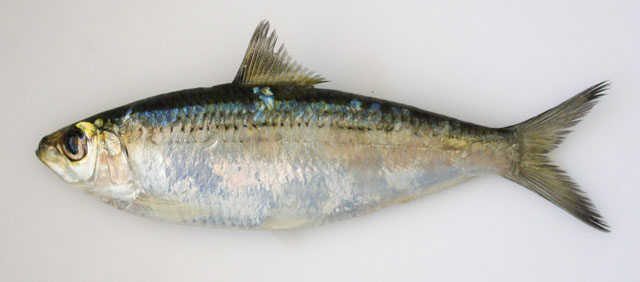| Dorosomatidae (Gizzard shads and sardinellas) |
| 12 cm TL (male/unsexed); 15.2 cm TL (female); max.weight: 27.3 g |
|
pelagic; freshwater, non-migratory |
| Asia: endemic to Lake Taal (formerly Lake Bombon), Luzon, Philippines. This freshwater lake, linked to the sea via the Pansipit River, was part of Balayan Bay, South China Sea, and was formed by a series of volcanic eruptions in the 18th century (Ref. 5522). |
|
Dorsal spines (total): 0-0; Dorsal soft rays (total): 15-18; Anal spines: 0-0; Anal soft rays: 18-21; Vertebrae: 39-42. Total scutes 28 to 30. gill rakers slender, long and numerous (Ref. 5520). |
| Inhabits lakes. This is the only species of Sardinella that is apparently found only, or even mainly, in freshwater. Presumably schooling. Also caught using ring nets (Ref. 5520). Mainly caught by gill net, beach seine, ring net and motorized push net (Refs.81494, 80728, 5520). Eaten fresh or dried (Ref. 5517). Is threatened by overfishing (Ref. 6308). |
|
Endangered (EN); Date assessed: 28 February 2017 (A2bd; B1ab(iii,v)+2ab(iii,v)) Ref. (130435)
|
| harmless |
Source and more info: www.fishbase.org. For personal, classroom, and other internal use only. Not for publication.

